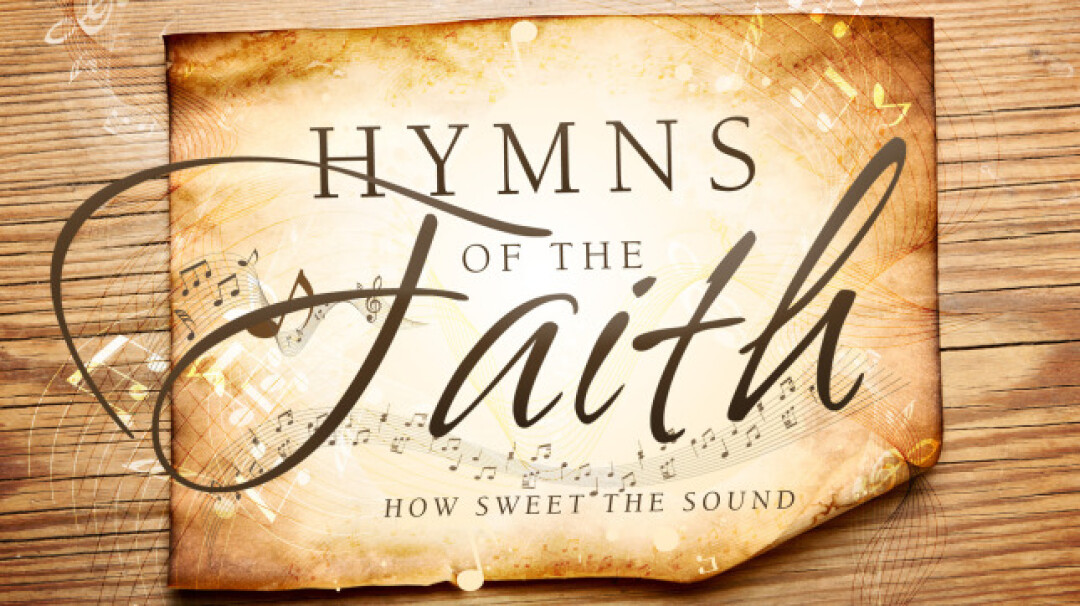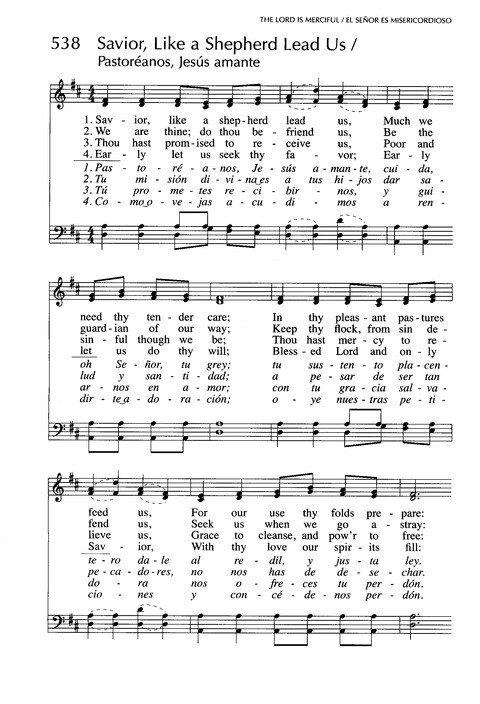

Savior, Like a Shepherd Lead Us
attributed to Dorothy A. Thrupp;
The United Methodist Hymnal, No. 381
Savior, like a shepherd lead us,
much we need thy tender care;
in thy pleasant pastures feed us,
for our use thy folds prepare.
Blessed Jesus, blessed Jesus!
Thou hast bought us, thine we are.
The Pender UMC Traditional Service Middle Hymn "Savior Like a Shepherd Lead Us" on Sunday, April 21, 2024 was played by Heidi Jacobs on piano and sung the Pender Sanctuary Choir and congregation.
The Pender UMC Traditional Service Middle Hymn "Savior Like a Shepherd Lead Us" on Sunday September 11, 2022 was played by Liz Eunji Moon on piano, accompanied on guitar by Brian Stevenson and sung the Pender Sanctuary Choir and congregation.
“Savior, Like a Shepherd Lead Us,” attributed to Englishwoman Dorothy A. Thrupp (1779-1847), is found in almost every Christian hymnal. According to the hymnology website, www.hymnary.org, “Savior, Like a Shepherd Lead Us” appears in 1005 hymnals. It is one hymn that most church members can recognize across denominational lines. What may surprise most churchgoers to know, however, is that for such a well-known and loved hymn of the Christian faith, we know little about how it was written or who the true author was. Its past aside, however, we see that whoever penned these words had a deeply theological message to share.
The mystery of the authorship of the words goes back to the 1830s, when the hymn made its first appearances in Thrupp’s Hymns for the Young (c. 1830) and the Fourth Edition in 1836, but without attribution. Rev. William Carus Wilson published a magazine titled The Children’s Friend (June 1838) and ascribed the poem to “Lyte,” possibly Henry Francis Lyte (1793-1847). British hymnologist J. R. Watson notes, “The authorship remains in doubt; all that can be added is that a stylistic analysis of the vocabulary, rhythm and content would suggest that Thrupp, rather than Henry Francis Lyte, was the author” (Canterbury Dictionary).
The penned words were directly applied to children, and the anonymous writer obviously meant to use this four-stanza hymn for teaching. It was more than twenty years later that the tune we presently know was composed by the American musician William Bradbury (1816-1868). His tune, named after himself, has most often been associated with this text, except in the case of the Episcopalian tradition that paired the text with the tune SICIILIAN MARINERS. When Bradbury composed this tune, however, he modified the original words meant for children and broadened the meaning to include all the congregation. Then, with some modernizing of the language, the text was standardized as it appears today. Since about 1830, the hymn has remained largely untouched. In fact, when the Methodist Book of Hymns shortened the refrain in 1966, the publisher received so many complaints, the full Bradbury version was put back into The United Methodist Hymnal (1989).
One has to wonder why this hymn has been so successful for nearly two hundred years. The most likely answer is found in the theology of the hymn. Since the focus of the original composition was for young children, Thrupp would have wanted to encapsulate the essence and message of a caring Christ who loves all his children. In the first stanza, we see Christ portrayed as a shepherd offering care and guidance to his flock as well as preparing for service and Christian life. This is followed by an acknowledgement that we are Christ’s. Thrupp alludes to Psalm 23 – “pleasant pastures” – and draws upon the image of Christ as the Good Shepherd (John 10:1-18).
Likewise, the second stanza picks up with the idea of possession by Christ and the continued picture of Christ as the Good Shepherd. Now, however, the author shows that we are not only possessed by Christ, but we are also in fellowship with Christ. Christ is our defender and guide, and he will hear us when we pray to him and follow in his footsteps. The author also alludes to the lost sheep (Matthew 18:12-14; Luke 15:3-7), especially in the phrase, “seek us when we go astray.”
The third stanza offers a wonderful picture of the salvation message of Christ—that no one is beyond the reach of God’s love and there is no sin too great to keep us separated from God. Underlying this message is an understanding of original sin, the inherent sinful nature of all of God’s children: “Thou hast promised to receive us,/poor and sinful though we be. . .” Although the concept of original sin finds its roots with St. Augustine (354-430), the sixteenth-century reformers Martin Luther and John Calvin assured the continuation of this theological concept among Protestants. The refrain then acknowledges “We will early turn to Thee,” providing an effective segue into the final stanza – a poetic device known as anadiplosis.
Stanza four reminds us that the original focus of the hymn was on children–with references to seeking Christ early in life: “Early let us seek thy favor;/early let us do thy will. . .”. Thrupp advocated for an early and honest following of Christ that leads us to a place of service and following God’s will. There is a plea for the love of God to be shown through us as the body of Christ and that God’s love will always be present, as he has always loved us.
The picture we get from this hymn, and the reason it has been such a defining song of the church, lies in the fact that it presents the fuller theology of Christian life in one song. This picture of the saving love and grace of God, the salvation message of God, God’s fellowship with us, and the continuing service to God gives us the broader perspective of what the Christian life should be. Thrupp attempted to make the hymn accessible to children, and Bradbury has presented it in a way that is applicable to every Christian. Although this song may have had some vague beginnings, it has a certain future in the church because of its message of hope, love, salvation, and Christian living.
Adapted from https://www.umcdiscipleship.org/resources/history-of-hymns-savior-like-a-shepherd-lead-us


